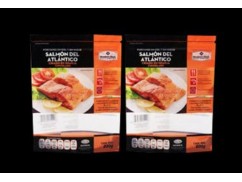How are stand up pouches sealed?
Feb 22,2024 | Views: 1068
Stand-up pouches are commonly sealed using various methods depending on the material of the pouch and the requirements of the contents. Here are some common sealing methods:
Heat Sealing: This is the most common method for sealing stand-up pouches. Heat sealing involves applying heat to the edges of the pouch to melt them together, creating a strong seal. This can be done using heat sealing equipment such as a heat sealer.
Zipper Sealing: Some stand-up pouches feature a zipper closure for easy opening and resealing. The zipper is typically applied during the manufacturing process and sealed to the pouch using heat or pressure.
Adhesive Sealing: Adhesive sealing involves applying a layer of adhesive to the edges of the pouch before sealing them together. This method provides a secure seal and is often used for pouches made from materials that are not suitable for heat sealing.
Ultrasonic Sealing: Ultrasonic sealing uses high-frequency vibrations to create heat and bond the edges of the pouch together. This method is often used for sealing pouches made from materials like foil or other heat-sensitive materials.
Prev: How are stand up pouches printed?
Next: What is the difference between a flat pouch and a stand-up pouch?
Heat Sealing: This is the most common method for sealing stand-up pouches. Heat sealing involves applying heat to the edges of the pouch to melt them together, creating a strong seal. This can be done using heat sealing equipment such as a heat sealer.
Zipper Sealing: Some stand-up pouches feature a zipper closure for easy opening and resealing. The zipper is typically applied during the manufacturing process and sealed to the pouch using heat or pressure.
Adhesive Sealing: Adhesive sealing involves applying a layer of adhesive to the edges of the pouch before sealing them together. This method provides a secure seal and is often used for pouches made from materials that are not suitable for heat sealing.
Ultrasonic Sealing: Ultrasonic sealing uses high-frequency vibrations to create heat and bond the edges of the pouch together. This method is often used for sealing pouches made from materials like foil or other heat-sensitive materials.
Cold Sealing: Cold sealing, also known as pressure sealing, is a method that uses pressure-sensitive adhesives to create a seal without the need for heat. This method is commonly used for sealing pouches containing heat-sensitive contents.





